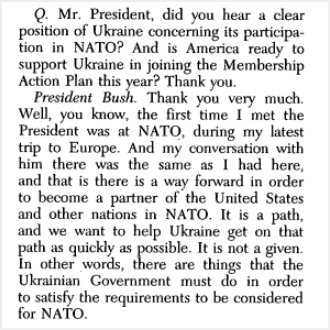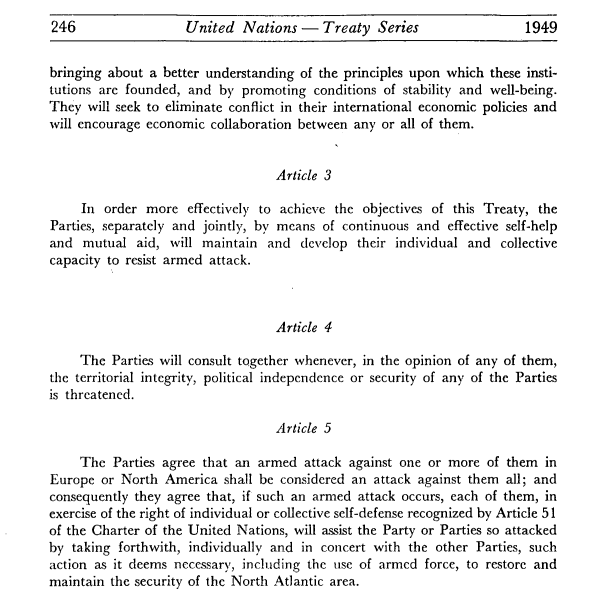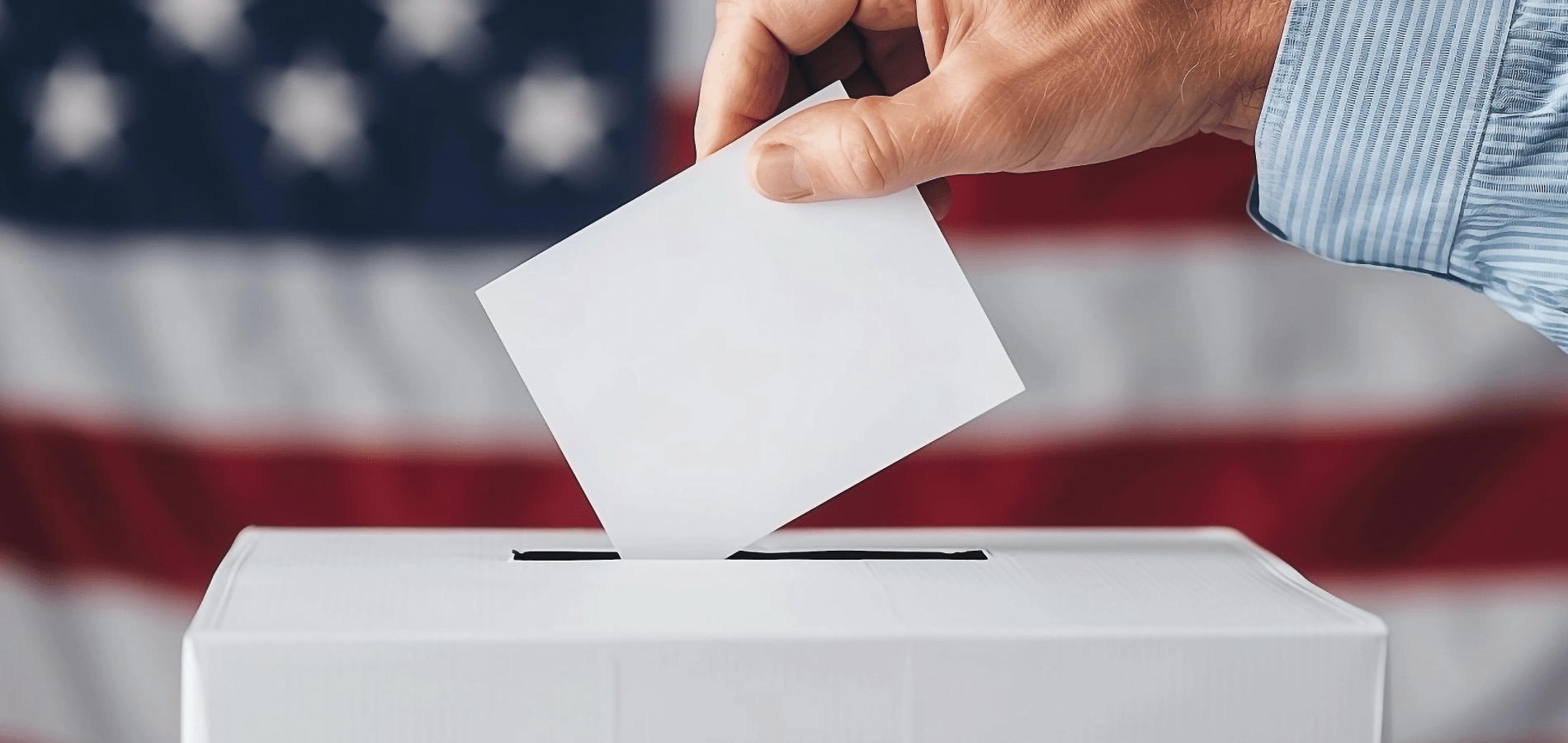On February 24th, Russia launched what Vladimir Putin called a “special military operation” in Ukraine, claiming to seek demilitarization and denazification. Russian forces began unprovoked missile and artillery attacks striking major Ukrainian cities. Tensions had been rising as Russian troops were slowly assembling at the Ukraine border[1]1 1 (April 27, 2021) Russian Military Mobilization on Ukraine’s Borders and in Occupied Crimea. This document can be found in HeinOnline’s U.S. Congressional Documents database. for the last year amidst Putin’s security demands on North Atlantic Treaty Organization (NATO). The resulting evacuations have created what is being considered the worst refugee crisis in Europe since World War II.
Bans, Demands, and Lands
Subsequently, Putin’s actions have led to the harshest sanction campaign against any nation in history. The United States has placed a ban on Russian oil, natural gas, and coal imports. In addition, European countries have frozen assets of multiple Russian banks and blocked them from the SWIFT messaging system used to transmit messages globally. What’s more, major companies such as American Express, McDonalds, Starbucks and Netflix have suspended operations in Russia.
Ukrainian President Volodymyr Zylenskyy has taken to social media from ground zero, sending messages that Kyiv will not back down. Zelenskyy turned down an offer from the United States to evacuate Ukraine and instead suited up for battle, going from former comedian, to politician, to solider. As seen from his Twitter post below, the world is watching this unfold firsthand through social media.
Не вірте фейкам. pic.twitter.com/wiLqmCuz1p
— Volodymyr Zelenskyy / Володимир Зеленський (@ZelenskyyUa) February 26, 2022
In the past few days, Putin has publicly stated that Zelenskyy could end the war by meeting four of his demands, including:
- Ceasing military action.
- Changing the constitution to preserve neutrality.
- Acknowledging Crimea as Russian territory.
- Recognizing separatist republics of Donetsk and Lugansk as independent states.
Russia and Ukraine have had a tumultuous past, and since the end of the Russian-Ukrainian Friendship Treaty[2]52240, 3007 UNTS 117. This document can be found in HeinOnline’s World Treaty Library following Russia’s annexation of Crimea, Ukraine has diligently pushed to become part of NATO. Using HeinOnline resources, let’s explore the history between Ukraine and NATO.
Ukraine and NATO Relations
Dialogue between Ukraine and NATO began in 1992 shortly after Ukraine regained its independence. In order to become a member of NATO, Ukraine must meet a series of criteria including the alliance’s standards for governance and transparency. Some NATO members have said Ukraine’s democracy is not stable enough, and others fear escalation with Russia if they are adopted. Here is a brief synopsis of NATO’s relationship with Ukraine over time.
1992
In 1992, Ukraine joined the North Atlantic Cooperation Council[3]William C. Bodie, Strategy and Successor States: Report from Kiev, 154 WORLD Affs. 107 (1992). This document can be found in HeinOnline’s Law Journal Library. A few years later, Ukraine was the first post-Soviet country to support the initiative of Central and Eastern European countries joining NATO.
2002
Ukraine’s relationship with the United States and NATO declined over one of the recordings from the Cassette Scandal[4]8 (February 27, 2004) Ukraine: Background and U.S. Policy. This document can be found in HeinOnline’s U.S. Congressional Documents database. where there was an alleged transfer of a sophisticated Ukrainian defense system to Saddam Hussein in Iraq.
2004
President Leonid Kuchma retracted a provision[5]Pawel Turczynski, European Union Policy towards Ukraine, 14 POL. Q. INT’l AFF. 49 (2005). This document can be found in HeinOnline’s Law Journal Library of the Military Defense of Ukraine which stated the country’s goal would be to join NATO. Instead, he stated that he only wished to strengthen the relationship with NATO, rather than joining.
2005
After a series of protests over electoral fraud, otherwise known as the Orange Revolution[6]Adrian Karatnycky, Ukraine’s Orange Revolution, 84 FOREIGN AFF. 35 (2005). This document can be found in HeinOnline’s Law Journal Library, President Victor Yushckenko replaced Kuchma, and in a change of events at a Summit in Brussels, declared the ultimate goal was membership in NATO[7]NATO Freedom Consolidation Act of 2007, Public Law 110-17, 110 Congress. 121 Stat. 73 (2007). This document can be found in HeinOnline’s U.S. Statutes at Large database..
2006
U.S. President George Bush cautiously supported[8]10 (August 23, 2006) Ukraine: Current Issues and U.S. Policy. This document can be found in HeinOnline’s U.S. Congressional Documents database. Ukraine becoming a member of NATO during a press conference.

2007
The Charter on a Distinctive Partnership was signed, establishing the NATO-Ukraine Commission (NUC)[9]Regional and Other Approaches, 22 U.N. Disarmament Y.B. 127 (1997). This document can be found in HeinOnline’s United Nations Law Collection.. The commission’s task is to assess the NATO-Ukraine relationship and suggest ways to improve or further develop cooperation. Members include representatives from all NATO states and Ukraine.
2008
Ukraine was denied membership[10]6 (September 10, 2012)
Ukraine: Current Issues and U.S. Policy. This document can be found in HeinOnline’s U.S. Congressional Documents database. to NATO despite strong support from the United States and European allies due to unmet criteria for the Membership Action Plan, as well as concerns over Ukraine’s relationship with Russia.
2010
Following the 2010 election, NATO membership was put on hold when then President Viktor Yanukovych decided not to sign the European Union-Ukraine Association Agreement and instead chose closer ties to Russia igniting protests known as Euromaidan[11]Nadia Diuk, Euromaidan: Ukraine’s Self-Organizing Revolution, 176 WORLD Affs. 9 (2014). This document can be found in HeinOnline’s Law Journal Library. Eventually Yanukovych and other government ministers fled the country.
2014
While the interim Yatsenyuk government stated that they had no plans to join NATO, the Ukrainian Parliament made this a priority, a likely reaction to the Russo-Ukrainian War. This kickstarted a mutually beneficial partnership where Ukraine contributed to NATO-led operations and support for a reform in the security and defense sector had taken a priority, a vital piece of Ukraine’s democratic development and ability to defend themselves.
2016
During the NATO Summit in Warsaw in July 2016, a Comprehensive Assistance Package (CAP) was put together in support of Ukraine[12]6 (November 14, 2016) NATO’s Warsaw Summit: In Brief. This document can be found in HeinOnline’s U.S. Congressional Documents database.. This included trust funds that focused on improving command and control, strengthening cyberdefense, and rehabilitating wounded soldiers.
2019
The Ukrainian Parliament adopted legislation in 2017 reinstating membership in NATO as a strategic foreign and security policy objective, and in February 2019 the constitution of Ukraine was amended[13]English translation of the Ukrainian consolidated text of the Constitution of 1996 as amended to Law No. 2680-VIII of 7 February 2019. [43] (1996) Chapter VI: Cabinet of Ministers of Ukraine. Other Bodies of Executive Power. This document can be … Continue reading to include this.

2021
In January, President Zelenskyy appealed to Biden to let Ukraine join NATO. Biden reaffirmed the United States’ commitment to Ukraine’s sovereignty. In June at the Brussels Summit, NATO leaders reiterated that Ukraine would become a member of the Alliance with the Membership Action Plan (MAP)[14]1 4 (2021) NATO 2030: A Celebration of Origins and an Eye Toward the Future (E3c Subcommittee-NATO Parliamentary Assembly Joint Hearing): Hearing Before the Subcommittee on Europe, Energy, the Environment and Cyber of the Committee on Foreign … Continue reading.
During a congressional hearing, Gerry Connolly, President of the NATO Parliamentary Assembly, spoke candidly[15]1 6 (2021) NATO 2030: A Celebration of Origins and an Eye Toward the Future (E3c Subcommittee-NATO Parliamentary Assembly Joint Hearing): Hearing Before the Subcommittee on Europe, Energy, the Environment and Cyber of the Committee on Foreign … Continue reading about the ongoing threat to Ukraine.

NATO’s Reaction
As a result of Russia’s attack on Ukraine, some of NATO’s eastern countries requested rare consultations under Article 4 of the founding treaty[16]539, 34 UNTS 243. This document can be found in HeinOnline’s United Nations Law Collection.. Article 4 has only been involved six times previously since the alliance formed in 1949.

NATO expressed its outrage over the Ukraine invasion, and deployed thousands of troops to Eastern Europe to protect their members. At this time, no troops have been sent to Ukraine. NATO has no plans to intervene, but has made it clear that they would invoke Article 5[17]539, 34 UNTS 243. This document can be found in HeinOnline’s United Nations Law Collection. if one of their alliances were attacked. Article 5 has only been initiated once, after the 9/11 attacks on the U.S. This clause does not automatically mean immediate reciprocation would happen—the nations would have to unanimously agree to move forward.
We are not part of this conflict. And we have a responsibility to ensure it does not escalate and spread beyond Ukraine. Because that would be even more devastating and more dangerous. With even more human suffering.
Future Remains Uncertain
More than 2 million refugees have fled Ukraine, and while the rest of the world continues to watch via social media and news stations, Russians have lost access to Facebook and other sites. Price shocks are hitting households worldwide, putting strain on lower income families. As this situation unfolds, stay in the know with HeinOnline as we continue to follow the story and history of conflict between these two nations.
HeinOnline Sources[+]
| ↑1 | 1 1 (April 27, 2021) Russian Military Mobilization on Ukraine’s Borders and in Occupied Crimea. This document can be found in HeinOnline’s U.S. Congressional Documents database. |
|---|---|
| ↑2 | 52240, 3007 UNTS 117. This document can be found in HeinOnline’s World Treaty Library |
| ↑3 | William C. Bodie, Strategy and Successor States: Report from Kiev, 154 WORLD Affs. 107 (1992). This document can be found in HeinOnline’s Law Journal Library |
| ↑4 | 8 (February 27, 2004) Ukraine: Background and U.S. Policy. This document can be found in HeinOnline’s U.S. Congressional Documents database. |
| ↑5 | Pawel Turczynski, European Union Policy towards Ukraine, 14 POL. Q. INT’l AFF. 49 (2005). This document can be found in HeinOnline’s Law Journal Library |
| ↑6 | Adrian Karatnycky, Ukraine’s Orange Revolution, 84 FOREIGN AFF. 35 (2005). This document can be found in HeinOnline’s Law Journal Library |
| ↑7 | NATO Freedom Consolidation Act of 2007, Public Law 110-17, 110 Congress. 121 Stat. 73 (2007). This document can be found in HeinOnline’s U.S. Statutes at Large database. |
| ↑8 | 10 (August 23, 2006) Ukraine: Current Issues and U.S. Policy. This document can be found in HeinOnline’s U.S. Congressional Documents database. |
| ↑9 | Regional and Other Approaches, 22 U.N. Disarmament Y.B. 127 (1997). This document can be found in HeinOnline’s United Nations Law Collection. |
| ↑10 | 6 (September 10, 2012) Ukraine: Current Issues and U.S. Policy. This document can be found in HeinOnline’s U.S. Congressional Documents database. |
| ↑11 | Nadia Diuk, Euromaidan: Ukraine’s Self-Organizing Revolution, 176 WORLD Affs. 9 (2014). This document can be found in HeinOnline’s Law Journal Library |
| ↑12 | 6 (November 14, 2016) NATO’s Warsaw Summit: In Brief. This document can be found in HeinOnline’s U.S. Congressional Documents database. |
| ↑13 | English translation of the Ukrainian consolidated text of the Constitution of 1996 as amended to Law No. 2680-VIII of 7 February 2019. [43] (1996) Chapter VI: Cabinet of Ministers of Ukraine. Other Bodies of Executive Power. This document can be found in HeinOnline’s World Constitutions Illustrated database. |
| ↑14 | 1 4 (2021) NATO 2030: A Celebration of Origins and an Eye Toward the Future (E3c Subcommittee-NATO Parliamentary Assembly Joint Hearing): Hearing Before the Subcommittee on Europe, Energy, the Environment and Cyber of the Committee on Foreign Affairs, House of Representatives, One Hundred Seventeenth Congress, First Session. This document can be found in HeinOnline’s U.S. Congressional Documents database. |
| ↑15 | 1 6 (2021) NATO 2030: A Celebration of Origins and an Eye Toward the Future (E3c Subcommittee-NATO Parliamentary Assembly Joint Hearing): Hearing Before the Subcommittee on Europe, Energy, the Environment and Cyber of the Committee on Foreign Affairs, House of Representatives, One Hundred Seventeenth Congress, First Session. This document can be found in HeinOnline’s U.S. Congressional Documents database. |
| ↑16, ↑17 | 539, 34 UNTS 243. This document can be found in HeinOnline’s United Nations Law Collection. |



